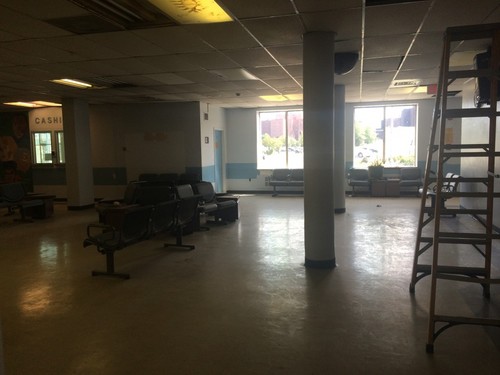At a hearing on DC General, opposition runs the gamut from rational to prejudicial
DC Mayor Muriel Bowser has a plan to close DC General and put smaller homeless shelters in all eight wards of the city. There’s a lot of opposition, ranging from concerns about shelters going up in dangerous places to positions that seem more about keeping poor minorities out of certain parts of the city.
Everyone agrees that the decrepit DC General Family Shelter needs to go; it’s notorious for being a place where families and children share space with mold, mice, raccoons, and bats, along with geysering water mains and collapsing, leaky ceilings.
Bowser’s plan is to distribute the 250 beds at DC General across sites across the city, each holding a maximum of 50 people. Over 150 citizens, non-profit leaders, and activists packed the Wilson Building for the DC Council’s Thursday, March 17th hearing on the shelter plan. There were over 90 public testimonies over 13 hours, a level of engagement that underscores how much emotion and outrage there is on the matter.
At this point, there are two clear camps: Those who have enough concerns about Bowser’s plan that they don’t think it should move forward, and those who acknowledge it to be imperfect but who think it should.
The plan doesn’t have to be perfect, say supporters
Among the supporters was a group organized by the Washington Interfaith Network, including pastors, citizens from across many wards, and former residents of DC General themselves.
“If everyone nitpicks this proposal,” said a former DC General resident, “I am concerned that this plan will fall apart, and DC General Family Shelter will still be standing with families living in horrible conditions.”
Councilmember Jack Evans shared the same sentiment in his opening remarks, saying “What I don’t want to leave here with, what I don’t want to happen today, is that we end up doing nothing. And that is a real possibility.”
Opponents present factual and “veiled” arguments
Some people, however, aren’t sold on the plan. A number of attendees followed a formula that’s familiar for development projects of all kinds, raising concerns about mismanaged taxpayer money, a lack of transparency in the process, and worries about the buildings’ designs.
One key argument against it comes from Ward 5, where the current proposal location is in an industrial area, surrounded by a bus depot, strip clubs, and no easy-to-access public transit. Residents, advocacy groups, and Councilmember Kenyan McDuffie all seriously questioned placing 50 some families in such a place.
Other arguments also have some legitimacy. Some of the units are surprisingly expensive, and many of the developers getting contracts are largely known Bowser backers.
But at the hearing, some of these concerns seemed closer to having roots in excluding “other” people from living in certain neighborhoods. Many people started statements with something like, “I am not against homeless people moving into my neighborhood, but…,” which Councilmember Elissa Silverman referred to as “veiled challenges.”
Other opponents left less up for interpretation: “The same problems that are at DC General are going to be moved across the street [from us],” said one witness.
In April, the DC Council will vote on how to move forward.
The issue of how to replace DC General has brought about themes and arguments that commonly surface any time a new development with new housing becomes a possibility for a DC neighborhood. Sifting through moral cover and deflections, as well as veiled attempts to keep “those” people out, is all too familiar territory. Those of us working to reshape a city that historically has warehoused people in overcrowded shelters and on blighted, ignored blocks should take note, and prepare for future hearings.


